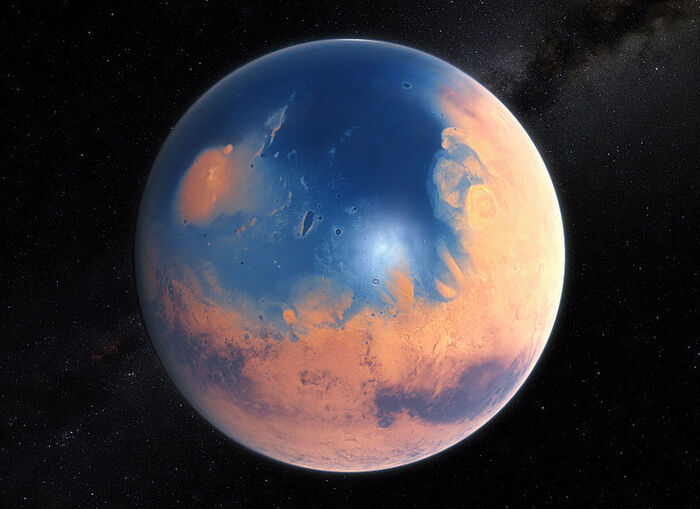Over 3.5 billion years ago, when it was still young, Mars was a volcanic planet: this is suggested by the traces of at least 63 volcanoes, which could be many more, found in its southern hemisphere thanks to data collected by several NASA probes such as Mars Global Surveyor, operational from 1996 to 2007, Mars Odyssey, launched in 2001 and which could have sufficient fuel until 2025, and Mars Reconnaissance Orbiter, orbiting the Red Planet since 2005. The analysis, published in the journal Nature Astronomy by the research group led by the University of Hong Kong, hypothesizes that the intense volcanic activity of Mars may have created an environment favorable to the birth of life in the past.
Unlike Earth, today's Mars is free of volcanic and tectonic activity and almost half of its surface is more than 3.5 billion years old: this means that since then the material that forms the surface crust has not been altered by phenomena similar to those that occur on Earth.
Recent discoveries, however, suggest that this has not always been the case and therefore researchers led by Joseph Michalski went in search of further evidence, studying the morphology of the Eridania area, in the Southern Hemisphere.
Thanks to the data collected by the probes that have observed and continue to observe the Martian surface, the authors of the study have identified traces of 63 volcanoes belonging to four different types, including cone volcanoes (or stratovolcanoes), of which Vesuvius is an example, and shield volcanoes, lower and wider, to which some of the largest terrestrial ones belong.
But there are indications that the volcanoes present in this area could be hundreds, residues of very intense volcanic activity that characterized the youth of Mars, immediately after its formation.
Reproduction reserved © Copyright ANSA

